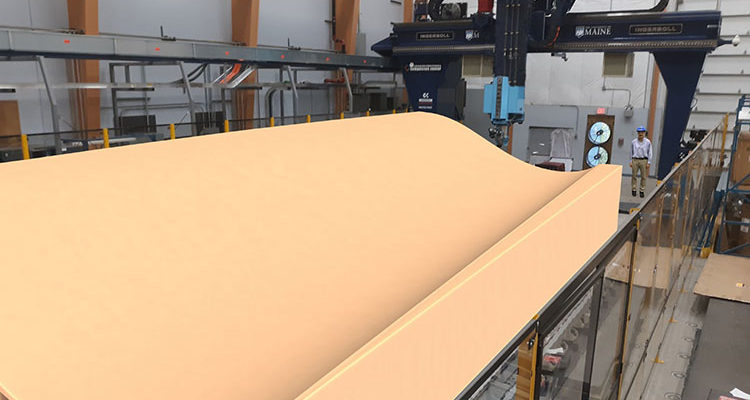As the market for wind energy continues to grow, it becomes more important to be able to design and manufacture wind blades quickly and at reasonable costs. The development of molds and tools for large blades can take more than a year and cost more than $10 million. The University of Maine (UMaine) Advanced Structures and Composites Center is looking to change that paradigm by developing a 3D printing solution for fabricating large, segmented wind blade molds.
While working on the 3D printing project funded by a $2.8 million grant from the U.S. Department of Energy Office of Energy Efficiency and Renewable Energy, the UMaine group will also work on a $4 million project with researchers at Oak Ridge National Laboratory (ORNL) to apply robotic deposition of continuous reinforcing fibers in wind blades. ORNL has developed a new process that reduces the cost and the time required to fabricate the molds by incorporating 3D printed heating elements allowing robotic deposition of continuous reinforcing fibers.
Siemens Gamesa and TPI Composites are also partnering on the project with hopes of transitioning to the 3D printing process. Other team members include Ingersoll Machine Tools who provided the 3D printer and Techmer PM, the cellulosic-thermoplastic feedstock compounder.


